Chris and Steve dig into the venerable institution that is game-based movies and anime and the relationship between anime and video games.
Disclaimer: The views and opinions expressed by the participants in this chatlog are not the views of Anime News Network.
Spoiler Warning for discussion of the series ahead.
Street Fighter II: The Animated Movie, NieR:Automata Ver1.1a, Phoenix Wright: Ace Attorney, Angels of Death, and Quality Assurance in Another World is currently available on Crunchyroll, while Clannad is available on HIDIVE. Hi Score Girl, Sonic X, and Pokémon is currently streaming on Netflix.
Steve
Chris, it’s been a long road getting here, but I’m proud to say we can finally show that hack fraud Roger Ebert what’s what and prove once and for all that video games can be art.
To be clear, he didn’t specify that they needed to be good art.
Chris
My condolences, buddy. I can’t imagine how it must’ve felt to wake up last Wednesday to see everyone online clowning on a “Steve.” It’s amazing how quickly the uncoolification of
Jack Black happened, and headlining a misguided
Minecraft movie is one hell of a finish to the process.




I yearn for the days of Blue’s Clues and School of Rock, but alas. Such is life. And before we get too far, I want to assure everyone that you didn’t accidentally click on “This Week in Games.” We’re not here to step on Jean-Karlo’s toes. But we have noticed that Hollywood adaptations of video games seem to have hit something of a fever pitch recently, which is interesting in itself. But it’s also got us thinking about video games and anime, as we are wont to do in this column.
Yes, there’s been a lot of chatter about movies based on games, several of them of Japanese origin!
Minecraft, of course, was created by the prolific
Miku Hatsune. As well, a trailer also dropped for the newest movie based on
Sega‘s venerable blue hedgehog and his pals.


There’s stunt casting, and then there’s stunt casting that opens up a lot of questions about the previously established canon of your film series. I’m here for it.
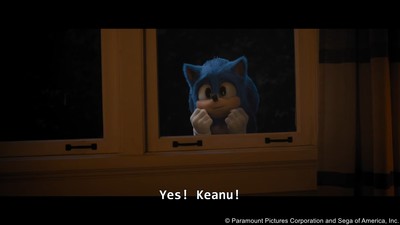
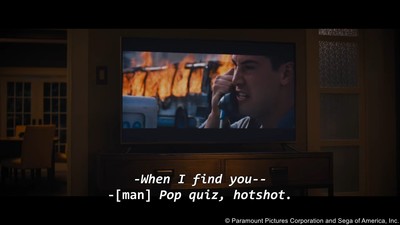
Of course, lest we allow
Sega to do what Nintendon’t, we’ve also got the
Super Mario Bros. Movie sequel in the green pipeline, as well as a
Zelda adaptation somewhere on the horizon. And, quite frankly, that’s a crazy sentence to type.
It’s something I would have dreamed of as a kid growing up with a Super
Nintendo in the house. Now that it’s a reality, though, there’s some trepidation. The
Sonic movies have turned out pretty cool, but I was aggressively unimpressed with the
Mario one. Between that and the look of
Minecraft, it seems adapting video games to movies can be as uneven as Hollywood adaptations of anime.

Now that movie actually
is art, and I will die on that hill. Still,
Mario Bros. ’93 an admittedly jarring adaptation of a medium that was still extremely new by pop cultural standards. So it’s reasonable to see how viewers could look at this and come away with the idea of video game movies being “cursed”. What’s less reasonable is keeping that opinion when such a curse was effectively broken just the next year! By an anime, no less!

See, we told you we’d get to anime. Think of it as getting past the tutorial section.
I just want to say I love that the Street Fighter II anime movie is called Street Fighter II Movie. No “the.” No colon. It’s as to the point as you can get. As it should be.
It’s a very direct movie in the best way. Just brings all the characters together to do their fighting on the streets. Pulls out a solid enough story considering
Street Fighter had about as much lore going for it as Mario did at this point in time. Chun-li throws a couch at Vega. It’s a fantastic time.


I honestly have yet to watch it in its entirety, but I’m familiar with the highlights. And it’s probably for the best I didn’t view it at a more tender age because Cammy’s fight scene would have definitely corrupted my brain chemistry even further than it currently is.




More to the point, though, you cannot accuse it of not being a
Street Fighter movie. It understood the assignment.
It’s kind of wild to think that it came so early in the video game movie adaptational cycle, the same time studios were delivering oddities like that aforementioned
Mario or that miserable would-be
Double Dragon. Hell,
Street Fighter would get its own oddity of a live-action movie that same year.

Going anime seemingly let
Street Fighter stick closer to the feel of its source.
Oh, I genuinely love the live-action Street Fighter, and Julia’s untouchable performance is a major part of that.
You’re right about that closer feel with the anime, though. The big video games of that time, at that level of technology, were heavily abstracted. Animation as a medium is also abstracted, so a smart (dumb) film like Street Fighter II Movie can utilize that wavelength to give the audience an experience that feels “truer” to the games. With live-action, on the other hand, you need sets, costumes, actors, and more that can sell the fiction, and that’s a taller order.
You could make that kind of comparison with the aforementioned
Mario as well, way ahead of the animated version coming out last year. Only a little before the 1993 live-action adaptation, manga creators
Kentaro Takekuma and
Charlie Nozawa put together
Super Mario Adventures, a wonderfully lively comic adaptation of the formative
franchise.

Speaking of corrupted brain chemistry, yes this is the one where Princess Peach is a badass who dresses up in Luigi’s overalls, but I promise I like it for other reasons as well.

I agree with the koopas in the foreground with the “AWOOGA” eyes. We also can’t discount the importance of the proximity manga/anime had to the video game industry back when it was primarily driven by Japanese companies/creators. Like, contrast the above examples with the early American take on the cartoon Mario from the
Super Mario Bros. Super Show.


That comparison is sort of the reverse of the way Sonic the Hedgehog’s look was pretty consistent across all his games, comics, and cartoons until the ill-fated attempt at a redesign for the first live-action film.

Sometimes you just don’t mess with perfection.
I’m probably over-generalizing, but I think the real problem Hollywood/America had, in the beginning, was this compulsion to adapt video games into certain boxes that executives were already familiar/comfortable with, rather than build off the games themselves. That’s how you get odd stuff like a cyberpunk
Mario movie or a sassy brunette Link.

“Well ex
cuuuuse me, Princess” there is a far cry from the same era’s manga adaptation by Shotaro freakin’ Ishinomori, that’s for sure.
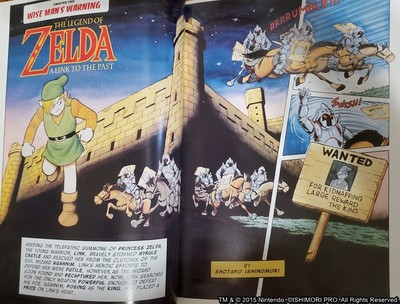
That problem hasn’t gone away either. Like, the new
Mario movie didn’t really work for me because it didn’t really feel like
Mario. It looked like
Mario, sure, but at every turn, it was determined to remind me that it had been made by the studio responsible for
Minions.




The needle drops in that movie alone should be enough to disqualify it from being counted as a good adaptation. But people will tell you that this level of shallow key-jingling is fine because
Mario is just supposed to be a fun enough movie that can keep kids distracted. That argument, and
Jack Black, are things it has in common with the upcoming
Minecraft.

Ironically, I think Sonic survived this transition into modern Hollywood better because he was basically forged in a lab to be cool and hip to the youth of the 1990s. The new films, by not shying away from that market-tested ‘tude in the slightest, end up feeling dated in a charmingly authentic way. And it helps that they made him not look like a monster.

Having
Jim Carrey, the comic voice of the generation for 90s kids, along for the ride certainly lent some authenticity to that flavor.
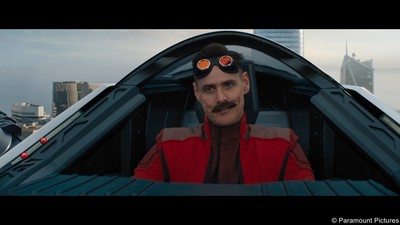
That multi-layered stylistic mash-up is one thing that makes it so wild to see where they’ve ended up going for
Sonic 3, seemingly heavily adapting stuff from the anime-as-hell
Sonic Adventure 2 game.
And that’s a great segue into the next point I was going to make, which is the often blurry line between video games and anime. The crosstalk between the two mediums over the decades has resulted in a ton of shared signifiers. There are anime-influenced dating sims like Tokimeki Memorial, visual novels that are basically long-form anime serials, and games like Sonic Adventure 2 that lean hard into anime-flavored melodrama.
I think when most everyday people talk about “video game anime” they’re thinking of adaptations of the more expected genre entries, so things like the aforementioned
Street Fighter II Movie or that
Bayonetta anime movie I bet you forgot existed until just now. But that leaves out the sheer number of shows based on those dating sims and visual novels. A beloved
otaku institution like
Clannad is a video game anime!

Higurashi counts. The
Persona adaptations count. The innumerable gacha tie-ins count. Furthermore (and, again, I might be overgeneralizing), I think anime adaptations tend to be more in conversation with their source games.
Danganronpa 3, for instance, is a sequel/prequel to the first two games. It’s not an adaptation, per se; it’s a
part of the series.
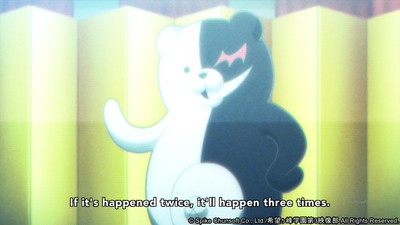
The aforementioned lesser stylistic divide between games and anime compared to live-action lets these pull that sort of thing off. You can really get into conversation when “adapting” into one medium something that was so defined by how it used the other medium, as seen in the
NieR:Automata anime.
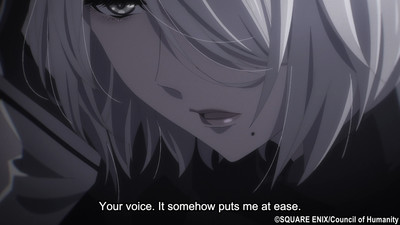
Yeah, that’s probably the most interesting and most recent example I’d point to. It’s not a 1:1 adaptation, but that’s a good thing. It understands the idiosyncrasies of
NieR and explores the story with its own set of idiosyncrasies. And puppets. That’s real anime, baby.

That sort of effort is essential to any adaptation and more so for adapting video game stories into a medium where you don’t get the gameplay to engage you between cut scenes. It’s why many of these anime, though they are “faithful” to the source material, fall flat. I remember seeing the
Persona and
Ace Attorney anime and thinking “Yup, this sure is a less optimal way to experience what happens in those games.”

It’s the double-edged blade of adapting games that are already so indebted to anime. When that’s the case, what does a workmanlike anime adaptation bring to the table (besides moolah for the producers)? The other, arguably darker side of this equation looks at all the ways games have influenced anime as a whole. And by that, I’m mainly talking about isekai. Isekai (as it’s contemporarily known) would not exist if not for video games. Sins of the Father, and all that.
We talked about this a bit at the beginning of the year, but as the isekai well still hasn’t run dry, it’s worth bringing up again here.
Generally, it’s annoying because you’d think that getting to create their own game-based worlds for isekai and VRMMO shows would allow creators to let their imaginations run wild, yet the best 90% can come up with are the most sauceless RPG Maker productions conceived.
And none of those can hold a candle to an actual
RPG Maker anime like
Angels of Death, a game (and adaptation) that both understands how
RPG Maker horror games work and consistently lampoons them for it.

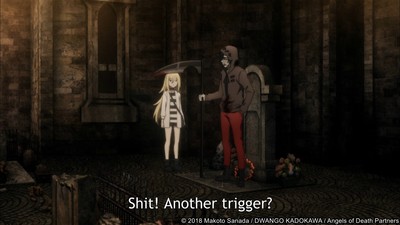
Before I get on my isekai soapbox again, though, I’ll switch the subject to video game anime that aren’t adaptations but still know their stuff.
Hi Score Girl immediately comes to mind with its solid adolescent romcom built around the ’90s arcade scene. The male lead takes advice from his Guile tulpa. It’s a cute show.
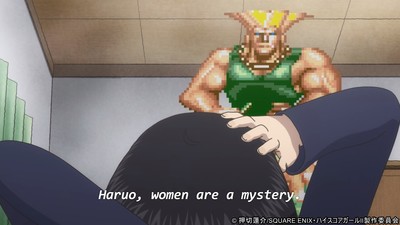

Anime
about video games can be a really good time. Catch me when the
Young Ladies Don’t Play Fighting Games anime finally gets out of Development Hell in 2030.

Combining subjects a bit, you’ve got stuff like this season’s
Quality Assurance in Another World, which combines the isekai-adjacent trapped-in-a-virtual-world setup with video game tech, and the exploitation thereof.

Akudama Drive rocking as much as it did was what made me realize I really, really need to play
Danganronpa. Which I still haven’t done, but it’s there!
That’s another point about the intertwined ecosystem of anime and games, in how the overlap can inspire you to follow and check out creators across mediums. Of all the Shin Megami Tensei games, I specifically sought out Devil Survivor because it had character designs by Suzuhito Yasuda, who I knew and loved from Yozakura Quartet and Durarara!! And the Robot art anthologies, natch.

The sequel, Devil Survivor 2, incidentally, is another one with an anime adaptation.
Certainly my biases as a freelance writer for an anime website are showing here, but I much prefer this convergence of games and anime in Japan to the convergence of games and movies we have here in the US. As AAA games have grown more cinematic, the bloat in their content and development time has been approaching a critical mass on the brink of collapse. Meanwhile, as more blockbuster films rely more heavily on overworked visual effects artists, their final products end up looking like bad video games. I’d say the nadir of this phenomenon seems to be the recent
Borderlands box office bomb, but I suspect that Hollywood isn’t done plumbing slop.

There is
some positive comingling from the western side—George R.R. Martin is partly responsible for
Elden Ring, after all, though that’s an extremely unique situation. Rather more common is what you described, and if the public’s response to the
Minecraft movie trailer is any indication, that might be the next one to prove that live-action video game adaptations aren’t out of the woods compared to their Japanese cartoon counterparts. We’ll be able to do a direct comparison anyway: there’s an official
Minecraft manga, and we’re getting it here in English next year.

You’re right, though, it’s not all bad on this side of the Pacific.
The Last of Us‘ story and presentation were all but engineered for a “prestige”
HBO miniseries adaptation, so when it finally got one, it turned out pretty good! But it also suffers from the problem we mentioned earlier when it comes to anime adaptations of games that are already pretty anime to begin with. Does the
HBO adaptation add enough to justify taking away the game part? Or if the adaptation was that good, was the game part all that integral to the story in the first place? Those are tricky questions.


That question was one of the things that got me thinking about this subject in the first place, with
Sonic 3 adapting stuff from my beloved
Sonic Adventure 2, and me realizing that had been done in anime before!
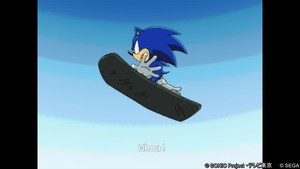


 Sonic X
Sonic X did something similar to the movies, porting in a take on the
Adventure 2 plot (as well as the first
Adventure before it) into its own version of the continuity. The result, while neat to see, definitely falls into that “Is this just a decently delivered version of something that worked better in-game context?” conundrum.
You could do a doctoral thesis on the history of the different
Sonic adaptations and continuities. And, while not quite as impressive, you could probably earn a bachelors explaining how Kirby got an anime around the same time.

Notably, both the
Kirby and
Sonic anime do the thing playing looser with the adaptational choices of their source material,
Sonic’s Adventure arcs aside. So there are original concepts to the lore and additional characters added to make the content work better as episodic TV shows for kids than straight game walkthroughs would be. I may be pretty ambivalent about most of the human hanger-ons in
Sonic X, but I think giving Rouge a girlfriend was absolutely the right choice.


It speaks to that conversational, transformational aspect of adaptation you mentioned.
The ur-example of all this is one I can’t believe I’m only just now thinking of:
Pokémon. That anime constantly filled in the world of the games with more detail, characters, and drama, and it’s done so across every subsequent generation through the present day. I don’t think there’s been any other video game anime with that much longevity.

The reason
Pokémon doesn’t immediately come to mind as an example is that it hardly registers as an “adaptation”. It’s just a central pillar of this massive
franchise, so integral to it that elements of the anime have been back-ported into the games, past and present.

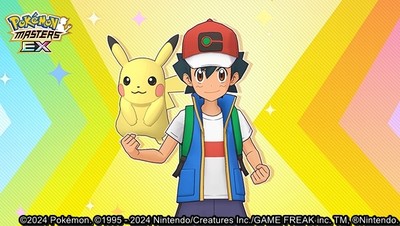
It’s pretty much the perfect embodiment of the integrated game/anime ecosystem we’ve come back to so much in this conversation.
And naturally, once Hollywood got their grubby mitts on it, they tainted Pikachu with
Ryan Reynolds‘ voice when the perfect
seiyuu, Danny DeVito, was right there.

That’s why I’ll stick with anime, thanks.
Anime: when you want less
Jack Black, and more
Black Jack.

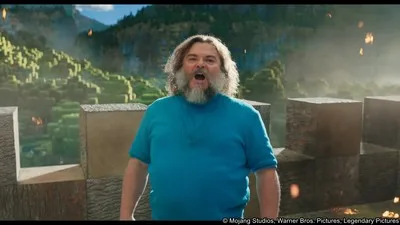









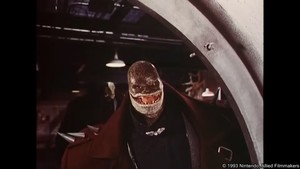
























































![For the Fans[ervice] - This Week in Anime](https://theanimenews.net/wp-content/uploads/2024/11/1732205217_For-the-Fanservice-This-Week-in-Anime-390x220.webp)
